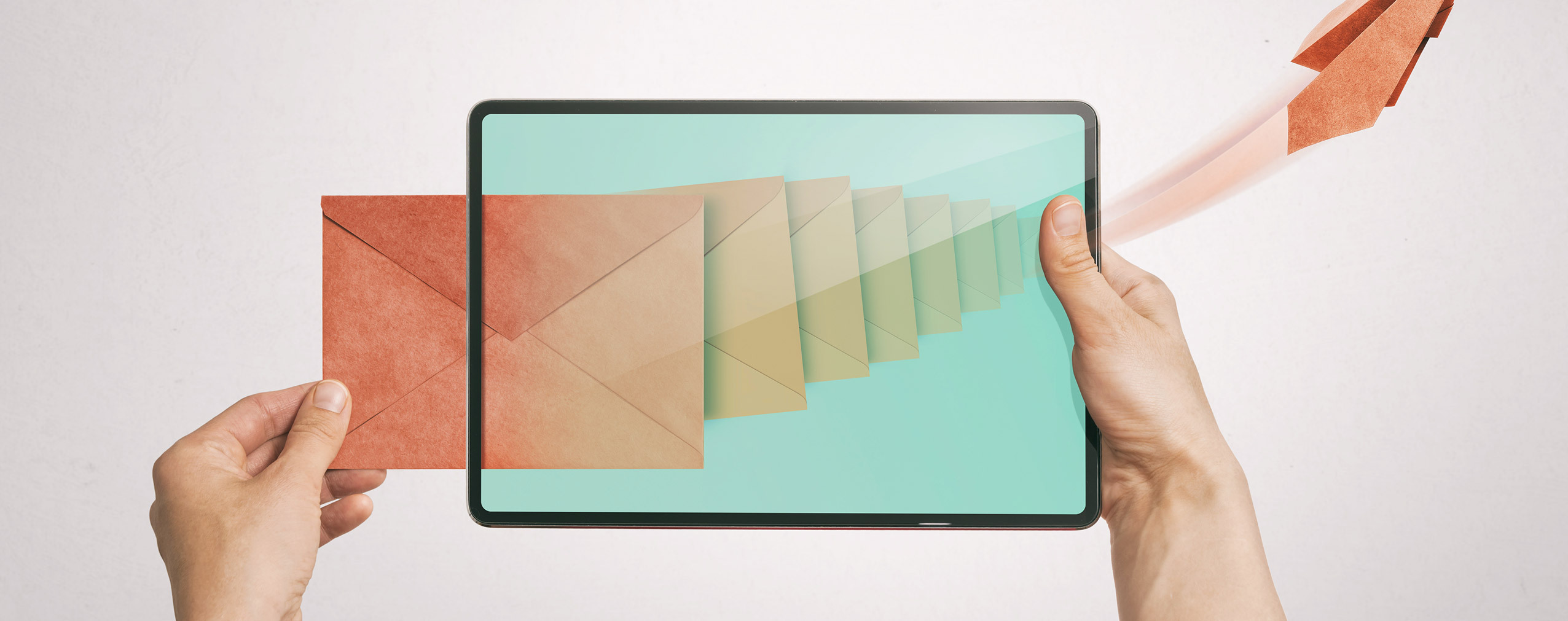Are you planning an event? If so, you’ll need to send out invitations. That way people know about it and have the opportunity to attend. Here’s a wild idea: send your invites via email.
Email invitations have a ton of benefits. For example, they’re super easy to create and personalize, and they’re much more cost effective than physical invitations.
So what are you waiting for? Keep reading to learn what email invitations are and how to craft them effectively. Then stick around to see a few top-tier meeting invitation email examples.
Let’s get started!
Table of Contents
What Are Email Invitations?
It’s pretty simple: an email invitation is any email that invites recipients to an event.
Said event could be an in-person industry conference, or a weekly webinar series, or a one-time YouTube Live stream—it doesn’t really matter.
The goal of all email invitations is to notify recipients of an event’s existence and convince them to attend. So, really, email invitations are similar to every other kind of invitation.
The difference between an email invitation and the snail-mail letters you sent your friends to invite them to your 10th birthday party is the level of reach that email affords. Emails are easily sent to hundreds, even thousands of people at one time. Not so with physical letters.
It’s also much easier to customize email invitations. Most email service providers (we’re partial to GetResponse) allow users to easily add individual subscriber names and other personal details to their messages, which helps event hosts connect with recipients on a deeper level.
Craft Better Email Invitations in 4 Steps
Here’s the truth: if you’re hosting an event, you should be sending each potential guest an event invitation email. Why wouldn’t you? They’re obviously beneficial, as we just discussed.
The question is, how do you craft an effective email invitation for your subscribers? We can help with that! Keep reading to learn how to create better email invitations in four steps.
1. Craft a Winning Subject Line
Your email invitation’s subject line is super important. If it doesn’t convince your subscribers to open and read your message, nobody will attend your event. No pressure!
Don’t worry, here are a few subject lines best practices to help you out:
-
Use Numbers: Open rates improve when numbers are used in subject lines.
-
Include Power Words: Certain words have been shown to increase open rates as well. Some of these words are “Important,” “Introducing,” and “Celebrate.”
-
Personalize Your Messages: Email software makes it easy to add subscriber names to your emails. Doing so in your subject line can boost opens by 20%.
-
Use the Right Sender Name: Using a personal sender name instead of a company name (i.e. John instead of Company XYZ) can boost opens by 35%.
-
Get Your Length Right: Finally, subject lines with 6-10 words get opened most often.
2. Use Eye-Catching Design
When your subscribers open your email invitations, what will they see? Hopefully, they’ll see a well-designed message that grabs their attention and doesn’t let go.
Every subscriber is different. Some respond to plain text emails better than HTML ones. Others prefer to receive colorful messages. You need to learn about your subscribers and their preferences to make sure your email invitations are properly designed.
But, in general, here’s what we suggest:
-
Start With a Headline: Most effective email invitations have a big, bold headline at the top. This helps subscribers understand the contents of your email and avoid confusion.
-
Choose Appropriate Colors: The best email invitations are pleasing to the eye. Choose colors that match your brand and the vibe of your event.
-
Use Images and/or Videos: Images and videos are engaging pieces of content. Use them! For example, if you’re inviting subscribers to your restaurant’s grand opening, you could include a picture of the delicious food on your menu.
-
Make it Mobile Friendly: 85% of people access their emails on their smartphones. If your messages aren’t mobile friendly, your email invites won’t be effective.
(Note: you don’t have to be a design wiz to craft eye-catching email invitations. Most email marketing tools include professionally designed templates you can use.)
3. Write Engaging Body Copy
Happy with your email invitation’s design? Great, now it’s time to write engaging body copy. It’s not that hard. Just cover the who, what, where, when, and how of your event:
-
Who: As in, who is hosting the event?
-
What: As in, what is the event in question?
-
Where: As in, where will the event take place?
-
When: As in, when will the event take place?
-
How: As in, how should the invitee respond?
Here’s a quick example:
“Ready to grow your business with webinars? ClickMeeting is excited for our upcoming webinar series entitled, ‘Webinars For Beginners: Everything You Need to Know,’ which will help you get started with our platform. Join us every Wednesday at 12:00pm EDT from the comfort of your own computer. To save your spot, click the link below.”
4. End With an Enticing CTA
Every email invitation should end with a call-to-action, better known as a CTA.
To determine your invite’s CTA, ask yourself, “What do I want my subscribers to do after they ready my message?” Then give them an opportunity to do this at the bottom of your email.
If you’re hosting a free webinar, give subscribers a chance to register for the virtual get-together. If you’re hosting an industry conference, give subscribers the opportunity to buy tickets. And if you’re hosting a YouTube Live, give subscribers a link to the live stream.
Here are three tips to make sure your CTAs hit home with your audience:
-
Stress the Value of Your Event: Why should people attend your event? Because it’s going to be awesome! Make sure your subscribers understand this.
-
Create a Sense of Urgency: Why should your audience respond to your CTA now, rather than later? Give them a reason to act. For example, you could say something like, “Seats are limited. Get your ticket before they’re gone!”
-
Design Your CTA Like a Pro: Lastly, make your CTA look like a button, which will help subscribers understand that you want them to click it. And make your button a different color than the rest of your email so that it stands out.
Check Out These Email Invitation Templates
So, what does an effective email invitation look like? Here are three examples you can use as inspiration. Feel free to use them as a baseline for your own invites.
Amazon
Every year, Amazon hosts the re:Invent conference. In 2020, the mega-brand sent this email to encourage its subscribers to attend. Notice how the invite’s headline creates a sense of urgency: “Register now, re:Invent 2020 starts this week!” The email then gives viewers all of the information they need and ends with an eye-catching CTA button. Great job!
Retail Global
First off, this email looks awesome. Second, it has all of the elements a good email invitation should have: it starts with a big, eye-catching headline; it tells recipients who, what, where, when, and how; and it includes a bright pink CTA button at the bottom. Well done!
Inspiration Cruises & Tours
This email invitation really nails its subject line: “Get up close with Amy Grant in Alaska”. If you’re a fan of Amy Grant’s music, which many people are, you’re definitely opening this email. Then, the actual message starts with a great headline, “Explore Alaska With a Music Icon,” features a picture of Amy, and tells subscribers exactly why they should buy tickets. It also includes two CTA buttons. This is a fantastic email. Great work!
Final Thoughts
Email invitations are one of the best ways to promote an event and make sure people actually, you know, show up and attend. Fortunately, they’re easy to create.
Just craft a winning subject line, deploy eye-catching design, write engaging body copy, and end your messages with an enticing CTA, using the tips and tricks we shared in this article. If you do, your event will be a much bigger success. Good luck!
Planning a virtual event? Then you need ClickMeeting. Our popular platform is used by tens of thousands of people in 125+ countries around the world because it’s intuitive and powerful. Sign up for a free 14-day trial to see for yourself—no credit card required.








